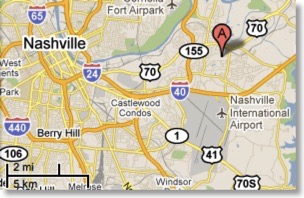Home
A comprehensive resource for safe and responsible laser use
US: Powerful laser claimed to be 5,000 mW aimed at police helicopter in Nashville
The helicopter crew directed ground officers to Cole's apartment, where they found him still holding the laser. He admitted that he had aimed it towards the helicopter.
A news report said it was a "5,000-milliwatt laser, a powerful green military-grade laser with an effective range of 10 miles."

Shannon S. Cole
Cole was charged with two counts of assault and two counts of reckless endangerment.
From News4 Nashville
COMMENTARY FROM LASERPOINTERSAFETY.COM
A 5,000 milliwatt laser (5 watts) is relatively rare for a handheld, battery-powered device. It may be that the laser label or marketing documentation claims it is 5,000 milliwatts. But this may have been inflated for marketing purposes. Our educated guess is that the laser is probably lower powered such as 1-2 watts (1000-2000 mW).
The takeaway point is that the claimed wattage of a laser is often very different from the actual output wattage. We are not aware of any police departments with the equipment and expertise to measure the actual output power of a laser.
Also, the term "military-grade" is an imprecise term with no established meaning. Military units may use handheld battery-powered lasers in the 5 watt range, but often these have additional features such as lenses to spread out the beam for dazzling persons coming to checkpoints. A 5 watt handheld battery-powered laser can be an eye hazard (hence the additional lenses to safely spread the beam) but for offensive purposes it would not be effective to say, burn skin or damage objects.
Finally, whether the laser has an "effective rage of 10 miles" depends on what effect is desired, or is to be guarded against. The news story did not indicate specifics, but here are some safety distances for a 5 watt, 532 nanometer (green) laser with a tight beam divergence (spread) of 1 milliradian.
Direct exposure to the beam can start to cause minor but detectable eye injuries at around 500 feet. Laser safety experts say a person should be 1,640 feet or further away from such a laser in order to have a "vanishingly small chance" of an eye injury. (E.g., the Nominal Ocular Hazard Distance is 1,640 feet.)
A 5W laser could cause temporary flashblindness to about 1.5 miles; the viewer would have an afterimage that would fade, similar to after a camera's flash goes off. The laser light creates veiling glare to about 6.6 miles meaning that a viewer could not see past the laser light while it was in their eyes, but could see when the beam moved off their eyed. And, the laser light is considered a distraction to 65.6 miles, meaning that the light would be brighter to a pilot than city or airport lights.
US: Man who pointed laser at passenger aircraft turned in by others
Police said the laser was first reported by a truck driver on Interstate 40 who was targeted. Then the pilot told the tower that a green laser had come from near a highway. The tower contacted police.
A witness later pointed out to police a hotel room at a Quality Inn in Mt. Juliet, east of downtown Nashville, from where a laser was being aimed out the window. A man in the room was arrested by Mt. Juliet police.
As of May 5, no charges had yet been filed.
From WKRN and WSMV
US: Three boys charged with felony near Nashville
The map shows the general area of the arrest:

From WBIR